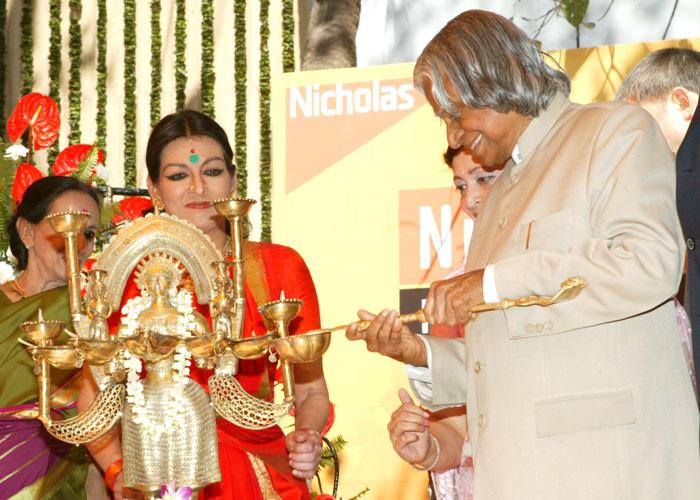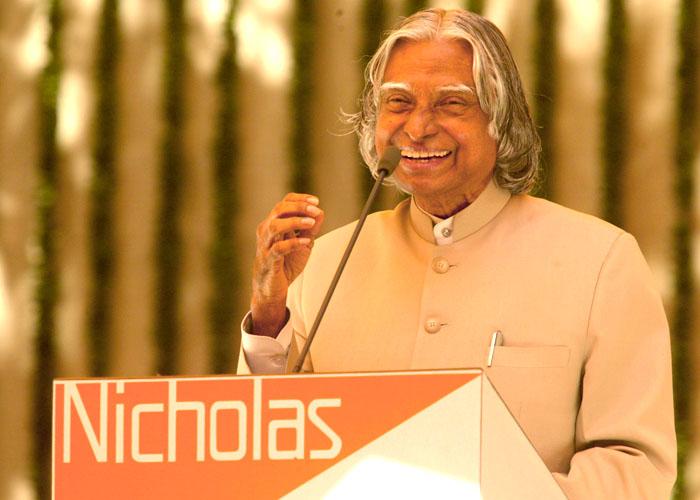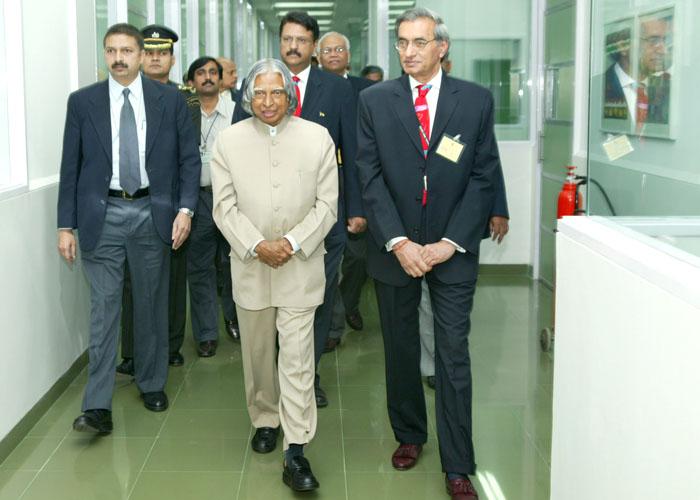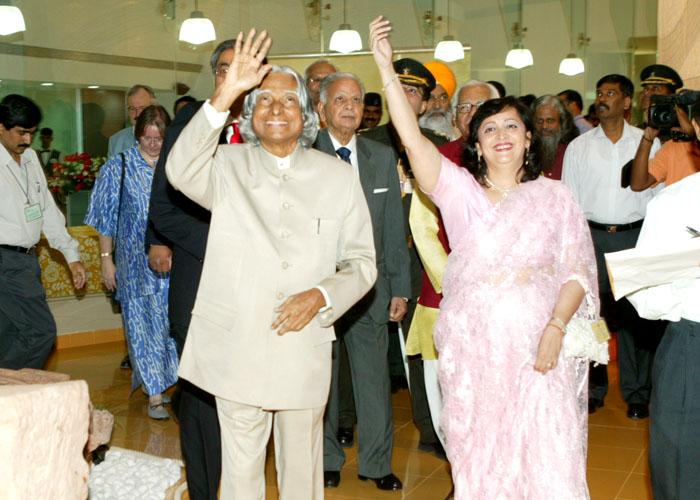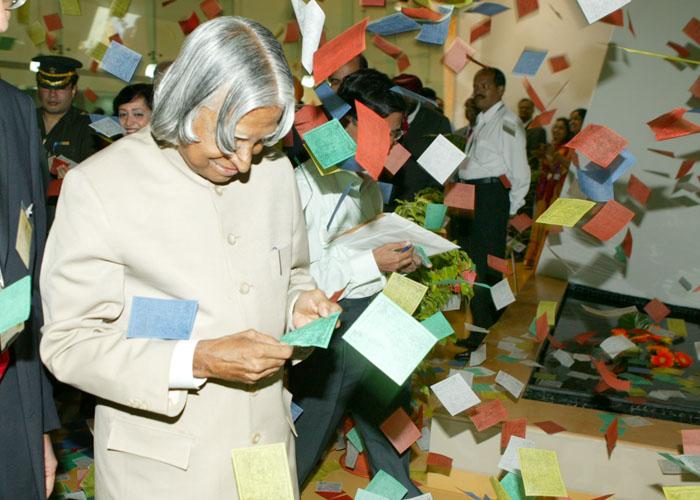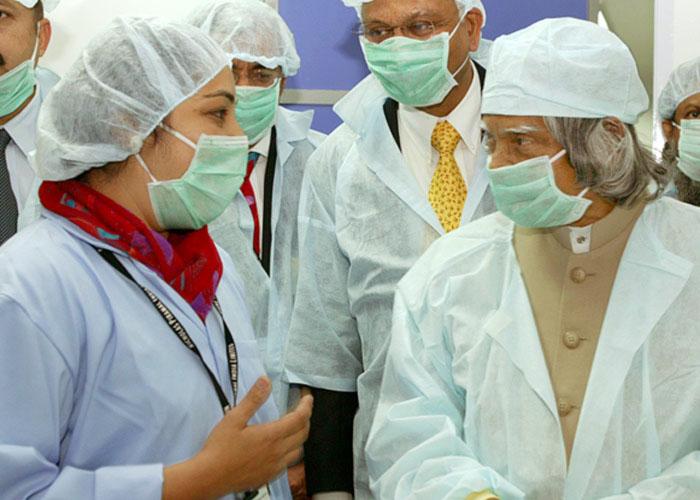Address At The Inauguration Of Nicholas Piramal Research Center
Mumbai : 18-11-2004
BIOMEDICAL RESEARCH : MISSIONS
I am delighted to participate in the inauguration of the Nicholas Piramal Research Center. My greetings to the organizers, pharmaceutical technologists, chemists, doctors, academicians, industrialists and distinguished guests. This centre emerged from Nicholas Piramal India Limited, which is one of India?s leading pharmaceutical companies providing innovative health care solutions to address prevention, diagnosis and treatment of diseases. This Research Center, I understand, will specialize in three critical areas such as development of anti cancer drug, inflammation inhibitor and drug for type 2 diabetes by overcoming insulin resistance. I am sure, these drugs when produced and marketed by Nicholas Piramal India Limited, will be competitive and will provide large value addition to the expected growth of Pharma industrial turnover of 75 bn dollars in 10 year?s time. NPIL is indeed a partner in the great pharma mission of India.
Competitiveness
Business symbolizes Competitiveness. Competitiveness leads to economic growth. Competitiveness is a single factor which will decide India transforming into a developed nation. Technology powers the competitiveness. Competitiveness leads to creation of brand institution. Nicholas Piramal Research Center could be a unique research center for enabling the Pharma industries to become globally competitive. The use of right technologies in R&D will bring in the right non-linear growth in the Pharma sector. The Nicholas Piramal India Ltd must have a vision of becoming a multi-national enterprise with a turnover of 5 bn dollars within a decade.
WTO Regime
On January 1st, 2005, the Indian pharmaceutical industry will face a challenge of demanding indigenous design of drugs, which will have a profound impact on global competitiveness and business viability. As India comes into compliance with the TRIPS protocol mandated by the WTO, a new IPR regime will be enacted that will extend patent protection to new product inventions. The new product patent regime will affect a sea change in the way Indian pharmaceutical companies think and do business. I hope that, Nicholas Piramal Research Center will enable NPIL to meet this challenge.
Recent development in biotechnology
India missed the great opportunity in partnering the human genome project and thereby lost the utility of tremendous data. I suggest the Indian biomedical community to take the initiative to become a working partner in the proteomics project of gene characterization. Department of Biotechnology in partnership with R&D, academia and industry has already launched a national programme on proteomics. I would suggest that this should be pursued as a mission mode project. This will lead to our being invited to participate in the global proteomics programme.
Information Technology
Information Technology has become very relevant to areas like pharmaceutical research because of the enormous amount of data which has to be mined and analyzed to arrive at definite conclusions. The results of proteomics programme will unravel the genomic mystery leading to the bio-medical community to create a new evolutionary future for the human race. The amount of data processing required is so huge and specialized that the new branch of 'bio-informatics' has emerged. As the volume of data generated grows, so does the demand for faster data processing technologies. Thus, to arrive at some destination in the area of 'bio-informatics', it is very necessary to deploy powerful information and communication technologies so as to be able to get a hold on gene sequences, expressions, protein structure delineation and population genetics etc.
We have Biotechnology and Information Technology. When they converge, we get Bio-informatics and the important science of proteomics emerged has revolutionized the drug design. Now with the emergence of Nano-technology we have an excellent opportunity to be a global leader in the development of drug delivery systems and medical diagnostics.
Computational biology and drug design
During my recent visit to Hyderabad, I launched the Bio-Suite which is a state-of-the-art software package that caters to all aspects of computational biology from genomics to structure-based drug design. It incorporates the latest publicly known algorithms, as chosen by a panel of academic partners, and has been coded entirely by the TCS team, using the best software engineering practices. It can be used by academic and R&D institutions, small/medium and large biotechnology companies. I would suggest the researchers of this Center to examine the possibility of using this bio-suite developed by TCS in collaboration with CSIR and academic institutions, for cost effective drug development.
Nano-bio technologies
Now we believe that Nanotechnology is the new technology that is knocking at our doors which has wider applications. It will be the central focus for many technologies to converge and open a large number of applications. Further, this technology will have a large domestic market potential leading to a robust economy. Nano-bio medical sensors will play a major role in glucose detection and endoscopic implants. Nanotechnological application to drug delivery system will revolutionize the health-care to a large extent which can be studied by the scientists of this new research Centre.
The world market in 2004 for nano materials, nano tools, nano devices and nano biotechnology put together is expected to be over hundred billion dollars. It has been noticed that the fastest growing area among these is nano-biotechnology. Next ten years will see nano technology playing the most dominant role in the global business environment and is expected to go beyond the billion dollar estimates and cross the figure of 1 trillion.
Nano-bio chip
Recently I met Prof. Vijay K Varadan of Pennsylvania State University, US. He shared his experience on the possible line of treatment for Parkinson?s disease and Epilepsy. The primary symptoms in Parkinson?s Disease, as you all are aware, are tremor or trembling in hands, arms, legs, jaw and face, rigidity or stiffness of the limbs, slowness of movement and impaired balance. Prof Varadan has devised a wireless system for monitoring and control of Parkinson disease. The system consists of an implantable nano-bio chip in the head region for generating a pulse to the nerve system; controlled either by a modified pacemaker or smart hat. Passive polymer based gyro sensor, is implanted in the tremor location. The sensor gets power from the Pacemaker and the Pacemaker then reads the tremor motion. The Pacemaker then generates pulse in the implanted device in the head to control the tremor. This appears to be a promising line of treatment for such diseases. Prof. Varadan also has reported that a few patients affected by Parkinson diseases had a full recovery. This is the promising area of research in which some of the researchers of this Centre can concentrate.
Molecule to drug
In India many R&D organizations and pharma industries discover the molecules, but most of these newly discovered pharmaceutical molecules are sold to multinationals abroad for further development to drug. Naturally, the benefit of value addition goes to the companies abroad. The research and drug design, development and acceptance for introduction is a big mission. Molecule to drug is indeed the business of strong minds with the capacity to take calculated risks. In this connection, I recall the principle taught by my Guru Prof Satish Dhawan, ?If one takes challenging tasks, problems will always occur. But problems should not become masters of the doers. Instead the problem has to be defeated and we should succeed.? I am happy to know that this Center is working on the concept of ?Molecule to Drug? as its mission, instead of selling the molecules to companies abroad.
I understand the special project group of this Centre is working on innovative ideas of creating novel molecular combination called ?Pro-Drugs? which combine established drugs with other molecular entities that can significantly improve the pharmacological efficacy and safety profiles of the original drug.
Intellectual Property Rights
We are now fast moving into the world of Intellectual Property Rights. Patents under the new international regimes are unfolding before us. To make sure that we do not lose out to any of the IPR issues, it will be necessary to properly document all our research work and to put in our claims for patents at the right time. Nicholas Piramal Research Centre in collaboration with NIPER, certain CSIR Labs and other national laboratories, should become the repository of IPR related activities not only to ensure that we protect our Intellectual Property of the modern times, but also to ensure that our repository of traditional medicinal knowledge is properly documented and can be put to strategic use to prevent IPR piracy. I believe that it is important for Indian business to capture the IPRs generated in India in order to realize the full benefit in the competitive global commerce.
India is the only country that has got the treasure of clinical data because of its billion population and plurality. This is a great advantage for India?s development for drug and drug delivery system. As you will be knowing, CII study has revealed that the drug development cost is one tenth compared to international market.
Traditional health care: Experiences
I would like to share my experiences while I was in Anna University, Chennai. One of them resulted in getting a patent for a new molecule discovered from a herb as an anti cancer drug. This came out of the fusion of two great minds, one was a bio technologist and the other was a traditional siddha medical practitioner. The traditional system of medicine like Ayurveda, Siddha etc., have advocated and practiced preventive and curative medicinal recipes specific to individuals. The body, mind, food and environment were looked at holistically to suggest a preventive or curative approach to health. Medicinal plants offer enormous scope for development of drugs. We need to create database of traditional medicinal plants for specific bioactivity and lead for development of new drugs. India has got tremendous opportunities for herbal farming and research. I understand NPIL has got partnership with Centre for Biotechnology of Anna University in realizing the anti cancer drug.
Evolution of research philosophy
As you all know that Johns Hopkins University in USA is doing a pioneering research work in medical field. I met Dr. Charles Cummings of the Johns Hopkins Board and his team, few days ago. I asked one question that was in my mind, to Dr Charles, ?What made Johns Hopkins a world class medical research centre in addition to its cherishing societal missions?? His answer was, ?it is a great tradition, it started with a number of visionaries with value system and missions. This tradition continues.?
Conclusion
Eradication of inflammatory diseases, treating cancer, controlling diabetes, preventing spread of HIV by developing anti HIV vaccine, controlling cardio vascular diseases by multiple technologies and practices and creation of competitive Pharma businesses - all need one important element, apart from other resources. That is creative leadership in health care. Who are the creative leaders? What are the qualities of a creative leader? The creative leadership is exercising the task to change the traditional role from commander to coach, from manager to mentor, from director to delegator and from one who demands respect to one who facilitates self respect. Higher the proportion of creative leaders with vision in the health care area, higher the potential for successes in research and discovery of healthcare products, leading towards a healthy and wealthy India.
While inaugurating the Nicholas Piramal Research Center I wish all success in your mission of developing, producing and marketing cost effective quality drugs in the competitive national and international markets.
May God Bless You.

